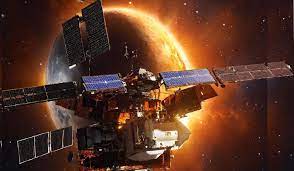ISRO’s Aditya L1 set for launch on Saturday, will not land on the Sun, but be positioned at the L1 point in the Earth-Sun system.

The Indian Space Research Organisation (ISRO) has announced that preparations for the launch of Aditya L1 are progressing smoothly, and everything is set for liftoff on Saturday. In a release featuring pictures of the launch rehearsal, the Indian space agency informed that the Polar Satellite Launch Vehicle (PSLV) has completed its internal checks and is fully prepared for its 59th mission – to deploy India’s inaugural solar mission into a low earth orbit.

Will Aditya L1 land on the Sun? No. Unlike Chandrayaan 3, where the Vikram lander softly touched down near the lunar south pole, the solar probe will instead be positioned at the first Lagrange point in the Earth-Sun system.

The distance to the L1 point is 1.5 million km, a span anticipated to be traversed by the spacecraft through various maneuvers over the course of 4 months. Remarkably, this distance represents only 1 percent of the overall 150 million km separation between Earth and the Sun.
NASA’s Parker probe ‘touched’ Sun

In December 2021, a spacecraft touched the Sun for the first time. The National Aeronautics and Space Administration or NASA’s Parker Solar Probe navigated through the Sun’s upper atmosphere, known as the corona, and sampled particles and magnetic fields within. The Parker Probe reached about 7.8 million kilometers from the Sun’s surface.
Since then, it has been executing loops in a highly elliptical orbit around the Sun, gradually drawing nearer with each orbit and relaying an abundance of observational data.
How close will NASA’s Parker probe go?

At present, the NASA probe, which orbits the Sun, is situated approximately 50 million kms away from Earth. It is currently making loops around Venus as part of preparations for an upcoming close encounter with the Sun. According to the most recent updates the NASA, the Parker Probe successfully passed by Venus on August 21, employing the planet’s gravity to align itself for an upcoming series of record-setting flights around the Sun, slated to commence next month. The US space agency has confirmed that the probe remains on track to execute its closest flybys of the Sun thus far.
Parker Solar Probe will employ Venus flybys to gradually reduce its orbit around the Sun, ultimately approaching as close as 6.16 million kilometers from its surface. This proximity places it well within the orbit of Mercury and approximately seven times nearer than any previous spacecraft.
During its anticipated closest approach in June 2025, Parker Solar Probe will be hurtling around the Sun at an astonishing speed of approximately 692,000 km per hour! To put this into perspective, it’s fast enough to travel from New Delhi to Lahore in just two seconds.

